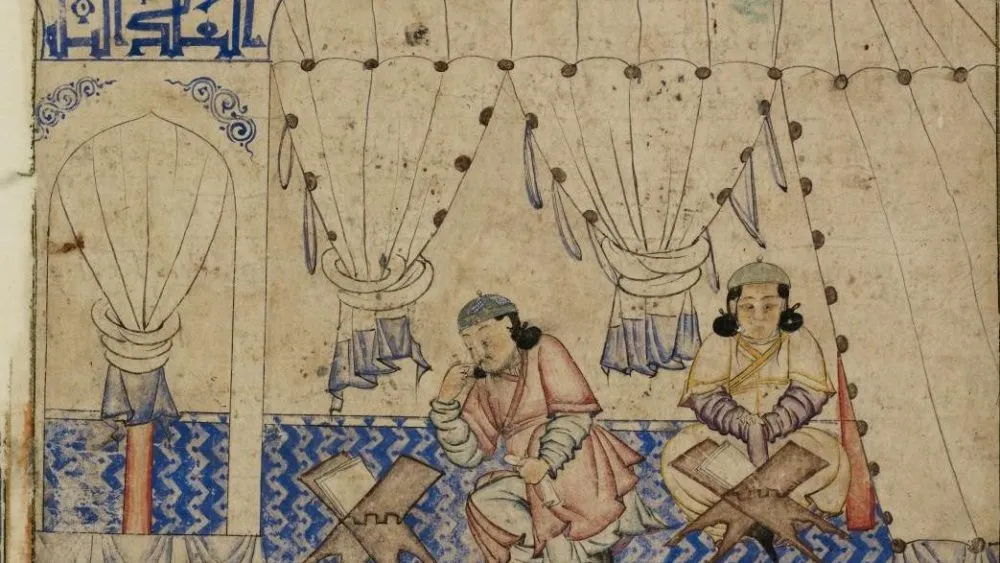Afghanistan is famous for its ethnic diversity. The largest peoples here are Tajiks and Pashtuns, who traditionally dominate the country’s politics and economy. However, there are also many other ethnic groups, including such unusual ones as the Hazaras

These are descendants of Genghis Khan’s Mongols, who (which is very rare!) did not assimilate among the Turks. On the contrary, they were strongly influenced by their sedentary neighbors and now speak the Tajik language. To top it all off, they are the largest group of Afghan Shiites.
So how did they end up in Afghanistan?
Due to its geography and culture, this region proved to be a tough nut for many conquerors, and the great Genghis Khan was no exception. Here was the fiefdom of Jalal al-Din, the most talented of the sons of Khorezm Shah and his successor on the throne of the Khorezm Empire. When Maverannahr was destroyed by Mongols, he fortified himself here. And in 1221 he even defeated the brother of the great khan in the battle of Parvan.
Genghis Khan found it necessary to intervene personally. But at the siege of Bamiyan an accidental arrow took the life of his favorite grandson Mutugen. He took a very harsh revenge on the locals, and in the whole area spared no one. Soon Jalal ad-Din was defeated in a battle on the Indus, after which he fled to the Sultan of Delhi.

The Khan did not move on, realizing that such a humid region was an extremely unpleasant theater of war for his army. But having gone to Central Asia, he preferred to leave a strong barrier here. And the descendants of the thousands left by him (in Persian — “Khazare”), more or less, are the ancestors of the Khazar ethnos.
Its basis were the representatives of the most glorious Mongol tribes: both Borjigin, the ancestors of Genghis Khan himself, and Tatars, Merkits, Kereits, Naimans, with whom he fought long and hard. Also, they experienced a strong Turkic influence and are genetically close to the inhabitants of Central Asia, especially the Uzbeks. Whereas maternal DNA lines say that the nomads often married Tajik women.
They were given the best land in the country — its fertile northern and northeastern parts — as pastures. They ruled Afghanistan for a hundred years, but lost power after they joined Tamerlane’s empire. The latter preferred to rely on the settled Turkic-Mongol nobility rather than on autonomous and mobile nomadic groups, which he did not trust.

Therefore, under the Timurids, the Khazars were in a difficult position, and they accepted the arrival of the Iranian dynasty of Safavids with joy. At that time not all of them were Muslims, but converted under the influence of Persian kings. For this reason they are Shia, unlike most Afghans.
Back in the time of Tamerlane’s descendants, the Pashtuns came down from the mountains and began to settle on the land. They were invited by local princes to rebuild cities destroyed in wars. Over several centuries, they achieved a demographic advantage over their neighbors. This backfired on everyone, but above all on the Hazaras, whom many Sunnis considered heretics.
In the Afghan Durrani empire they still served in the army, but then they gradually began to withdraw from military and political affairs. In addition, they were forced into the mountainous central part of Afghanistan, which was ill-suited for cattle breeding and farming. The very Bamiyan and its Buddha statues, as well as the Salang Pass, known to Afghan veterans, are exactly Hazara places.

Blue, in the center
In their homeland, the Hazara are considered one of the most peaceful peoples, prone to compromise and agreement. Nevertheless, there they are in the army and in gangs, with the support of Iran participated in the Afghan war. But their neighbors do not trust them because of their faith, and many Hazaras prefer to emigrate to other Islamic countries. With a total population of about 8 million, only half of them live in Afghanistan, one and a half million and half a million each in Pakistan and Afghanistan.
The Mongolian language is almost forgotten, they speak a local dialect of Tajik, which here is called Dari. Nevertheless, these people remember their origins and maintain contacts with Mongols and Mongolian peoples of Russia. There are also tales that during the war the Khazar mujahideen could establish communication with our Kalmyks and Buryats and even sometimes parted peacefully with the Shuravi for this reason.
